Maki sushi is a popular type of sushi that originated in Japan. It is a sushi roll that consists of nori (seaweed) on the outside, vinegared rice on the inside, and various fillings such as seafood and vegetables. The word “maki” means “roll” in Japanese, and it is one of the most common types of sushi found in Japanese cuisine.
Understanding maki sushi is important for sushi enthusiasts and food lovers. It is a versatile dish that can be enjoyed in many ways, from simple and traditional to creative and exotic. There are many types of maki sushi, each with its unique flavor and ingredients. Some of the most popular varieties include futomaki, hosomaki, uramaki, and temaki. The key ingredients of maki sushi include rice, nori, and fillings, which can range from raw fish and vegetables to cooked meats and eggs.
Key Takeaways
- Maki sushi is a popular type of sushi that originated in Japan and consists of nori on the outside, vinegared rice on the inside, and various fillings.
- There are many types of maki sushi, each with its unique flavor and ingredients, including futomaki, hosomaki, uramaki, and temaki.
- The key ingredients of maki sushi include rice, nori, and fillings, which can range from raw fish and vegetables to cooked meats and eggs.
Understanding Maki Sushi

Maki sushi is a popular type of sushi that is enjoyed all over the world. It is made by rolling sushi rice and various fillings in a sheet of nori seaweed. The word “maki” means “roll” in Japanese, and that is exactly what this type of sushi is – rolled sushi.
Maki sushi is one of the most popular types of sushi because it is easy to eat and comes in a variety of flavors. The fillings can range from raw fish and seafood to vegetables and even fruit. Some popular fillings include cucumber, avocado, crab meat, and tuna.
There are different types of maki sushi, including futomaki, uramaki, and temaki. Futomaki is a thick sushi roll that usually contains several fillings, while uramaki is an inside-out sushi roll that has rice on the outside and nori on the inside. Temaki is a cone-shaped sushi roll that is often eaten as a hand roll.
Maki sushi is often served with soy sauce, wasabi, and pickled ginger. It is important to note that in Japan, the correct term for maki sushi is makizushi.
Overall, maki sushi is a delicious and convenient way to enjoy sushi. With its wide range of fillings and flavors, there is something for everyone to enjoy.
Types of Maki Sushi
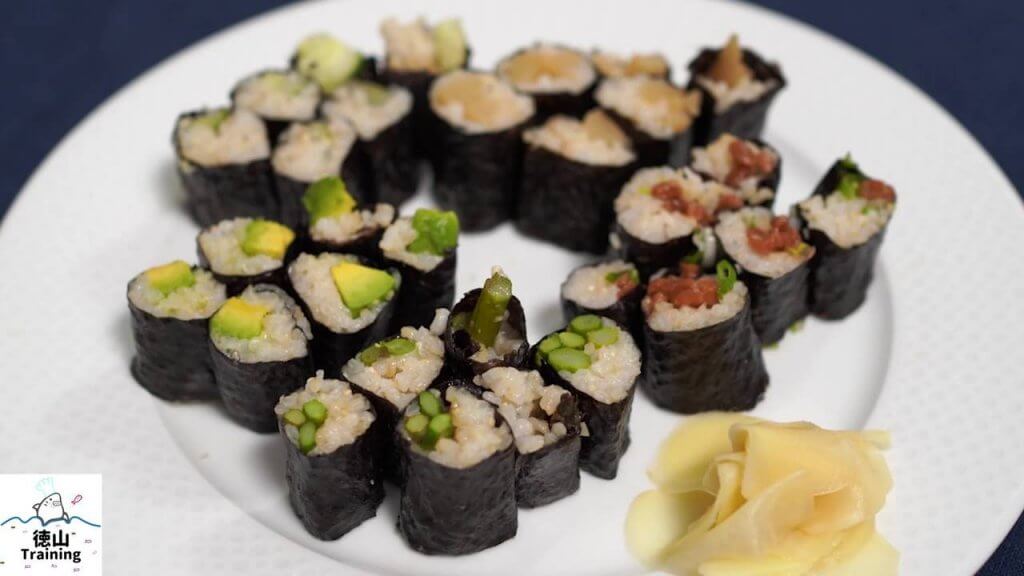
Maki sushi is a type of sushi roll that consists of sushi rice, seaweed, and various fillings. There are different types of maki sushi, each with its own unique ingredients and preparation methods. Here are some of the most common types:
Hosomaki
Hosomaki is a thin sushi roll that typically contains only one filling, such as cucumber, tuna, or pickled daikon. The seaweed wrap is on the outside, and the sushi rice is on the inside. Hosomaki is usually cut into small pieces and served as an appetizer or snack.
Futomaki
Futomaki is a thicker sushi roll that contains multiple fillings, such as crab, egg, and cucumber. The seaweed wrap is on the outside, and the sushi rice is on the inside. Futomaki is usually cut into larger pieces and served as a main dish.
Uramaki
Uramaki, also known as an inside-out roll, is a sushi roll that has rice on the outside and seaweed wrap on the inside. Uramaki typically contains multiple fillings, such as avocado, crab, and cucumber. Uramaki is usually cut into larger pieces and served as a main dish.
Temaki
Temaki is a cone-shaped sushi roll that is made by wrapping a sheet of seaweed around sushi rice and various fillings, such as salmon, tuna, and avocado. Temaki is usually eaten by hand and is a popular type of sushi for parties and gatherings.
Chumaki
Chumaki is a medium-sized sushi roll that typically contains one or two fillings, such as salmon and avocado. The seaweed wrap is on the outside, and the sushi rice is on the inside. Chumaki is usually cut into medium-sized pieces and served as a main dish.
Ehomaki
Ehomaki is a type of sushi roll that is traditionally eaten on Setsubun, a Japanese holiday that marks the beginning of spring. Ehomaki typically contains seven fillings, such as shrimp, egg, and cucumber. The seaweed wrap is on the outside, and the sushi rice is on the inside. Ehomaki is usually cut into larger pieces and eaten in silence while facing a specific direction that is believed to bring good luck.
Norimaki
Norimaki is a type of sushi roll that is wrapped in a sheet of toasted seaweed called nori. Norimaki typically contains multiple fillings, such as tuna, cucumber, and avocado. Norimaki is usually cut into small pieces and served as an appetizer or snack.
Overall, maki sushi is a versatile and delicious type of sushi that can be enjoyed in many different forms. From the thin and simple hosomaki to the elaborate and festive ehomaki, there is a type of maki sushi for everyone to enjoy.
Key Ingredients of Maki Sushi

Maki sushi is a popular Japanese dish that consists of vinegared sushi rice, nori, and various fillings, such as fish, vegetables, and seafood. Here are the key ingredients of maki sushi:
Sushi Rice
Sushi rice, also known as Shari, is a short-grain rice that is essential to making maki sushi. It is cooked with a specific ratio of water and vinegar, which gives it a sticky texture and a slightly sweet and sour taste. Sushi rice is the base of maki sushi and holds the ingredients together.
Nori
Nori is a type of seaweed that is used to wrap sushi rice and fillings in maki sushi. It is toasted and dried before use, and it has a slightly salty taste. Nori sheets come in different sizes and shapes, and they can be cut to fit the size of the sushi roll.
Fish
Fish is one of the most common fillings in maki sushi. Sushi grade fish, such as salmon, tuna, and crab, are used raw or cooked. The fish is cut into thin slices and placed on top of the sushi rice before rolling. The quality of the fish is crucial to the taste and texture of the sushi.
Vegetables
Vegetables are also commonly used in maki sushi. Cucumbers and avocados are popular choices, but other vegetables such as carrots, bell peppers, and radishes can also be used. Vegetables are cut into thin strips and placed on top of the sushi rice before rolling.
In summary, maki sushi is a delicious and healthy dish that consists of sushi rice, nori, fish, and vegetables. The combination of these ingredients creates a unique and flavorful taste that is enjoyed by many people worldwide.
Popular Maki Sushi Rolls

Maki sushi is a popular type of sushi that is enjoyed all around the world. It is a sushi roll that consists of sushi rice, seaweed, and a variety of fillings. Here are some of the most popular maki sushi rolls:
California Roll
The California roll is a popular maki sushi roll that was first created in the United States. It typically consists of avocado, crab meat or imitation crab, and cucumber. The roll is often served with soy sauce and wasabi.
Tuna Roll
The tuna roll is a classic maki sushi roll that is enjoyed by many sushi lovers. It typically consists of tuna and sushi rice wrapped in seaweed. The roll is often served with soy sauce and wasabi.
Cucumber Roll

The cucumber roll is a refreshing maki sushi roll that is perfect for those who want a light and healthy option. It typically consists of cucumber and sushi rice wrapped in seaweed. The roll is often served with soy sauce and wasabi.
Philadelphia Roll
The Philadelphia roll is a popular maki sushi roll that is enjoyed by many sushi lovers. It typically consists of smoked salmon, cream cheese, and cucumber. The roll is often served with soy sauce and wasabi.
Dragon Roll
The dragon roll is a popular maki sushi roll that is known for its unique presentation. It typically consists of eel, avocado, and cucumber. The roll is often topped with sliced avocado to give it the appearance of a dragon.
Spicy Tuna Roll
The spicy tuna roll is a popular maki sushi roll that is enjoyed by those who like a little bit of heat. It typically consists of tuna and spicy mayo wrapped in seaweed. The roll is often served with soy sauce and wasabi.
Rainbow Roll
The rainbow roll is a colorful maki sushi roll that is enjoyed by many sushi lovers. It typically consists of crab meat or imitation crab, avocado, and a variety of fish such as tuna, salmon, and yellowtail. The roll is often served with soy sauce and wasabi.
Alaska Roll
The Alaska roll is a classic maki sushi roll that is enjoyed by many sushi lovers. It typically consists of salmon and avocado wrapped in seaweed. The roll is often served with soy sauce and wasabi.
Boston Roll
The Boston roll is a popular maki sushi roll that is enjoyed by many sushi lovers. It typically consists of shrimp, cucumber, and lettuce. The roll is often served with soy sauce and wasabi.
Spider Roll
The spider roll is a popular maki sushi roll that is known for its unique presentation. It typically consists of soft-shell crab, cucumber, and avocado. The roll is often served with soy sauce and wasabi.
Avocado Roll
The avocado roll is a simple yet delicious maki sushi roll that is enjoyed by many sushi lovers. It typically consists of avocado and sushi rice wrapped in seaweed. The roll is often served with soy sauce and wasabi.
These are just a few of the most popular maki sushi rolls. Whether you are a sushi lover or a beginner, there is a maki sushi roll out there that is perfect for you.
Preparing Maki Sushi at Home
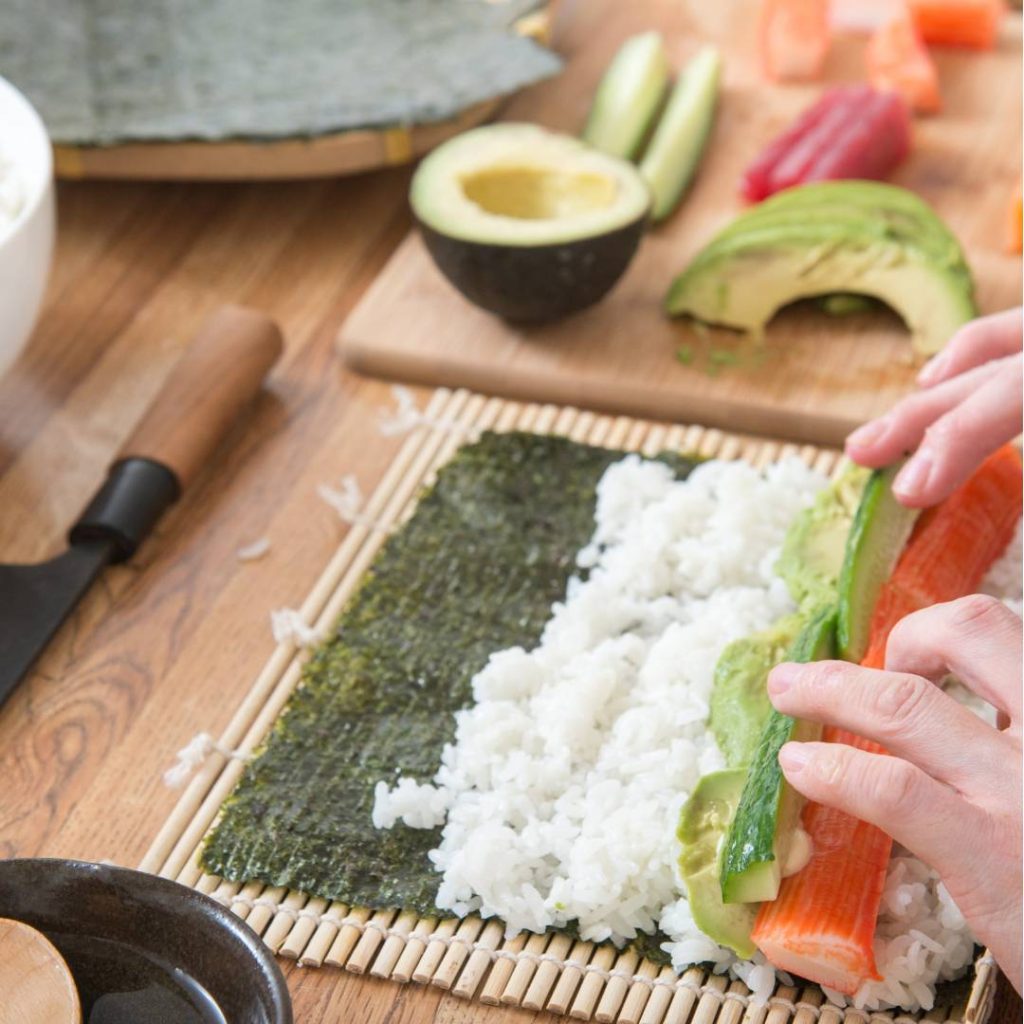
Making maki sushi at home is a fun and rewarding experience. With a few simple steps, you can create your own delicious sushi rolls. In this section, we will cover how to prepare sushi rice and how to roll maki sushi.
Sushi Rice Preparation
Sushi rice is the foundation of any good sushi roll. To prepare sushi rice, you will need:
- 2 cups of sushi rice
- 2 1/4 cups of water
- 1/4 cup of rice vinegar
- 2 tablespoons of sugar
- 1 teaspoon of salt
Now, follow these instructions:
- Rinse the rice in cold water until the water becomes clear. Drain the rice in a colander for 30 minutes.
- In a pot, combine the rice and water. Bring to a boil, then reduce the heat to low and simmer for 20 minutes.
- Remove the pot from the heat and let it sit for 10 minutes.
- In a small bowl, mix the rice vinegar, sugar, and salt until the sugar and salt dissolve.
- Transfer the rice to a large bowl and add the vinegar mixture. Gently mix the rice with a wooden spoon or spatula until the vinegar mixture is evenly distributed.
- Cover the bowl with a damp towel and let it cool to room temperature.
Rolling the Maki Sushi
To roll maki sushi, you will need:
- Sushi rice
- Nori sheets
- Fillings of your choice (such as cucumber, avocado, crab meat, or tuna)
- Soy sauce, pickled ginger, and wasabi (optional)
- Bamboo sushi mat
- Place a nori sheet on top of the bamboo sushi mat with the shiny side facing down.
- Wet your hands with water and take a handful of sushi rice. Spread the rice evenly over the nori sheet, leaving a 1-inch border at the top.
- Arrange your fillings on top of the rice.
- Using the bamboo mat, roll the sushi tightly, starting from the bottom and rolling toward the top. Use the mat to shape the roll into a cylinder.
- Wet the border of the nori sheet with water and press it firmly to seal the roll.
- Use a sharp knife to cut the roll into bite-sized pieces.
Serve your sushi with soy sauce, pickled ginger, and wasabi, if desired. Enjoy your delicious homemade sushi!
Condiments and Accompaniments

Maki sushi is often served with a variety of condiments and accompaniments that can enhance its flavor and texture. Some of the most common condiments and accompaniments include:
- Soy sauce: Soy sauce is a staple condiment in Japanese cuisine, and it is often served with maki sushi. Soy sauce is a salty and savory sauce that can add depth of flavor to the sushi. It is typically served in small dishes alongside the sushi, and diners can dip their sushi into the soy sauce before eating it.
- Wasabi: Wasabi is a pungent green paste that is made from the wasabi plant. It is often served with maki sushi as a condiment. Wasabi has a strong, spicy flavor that can add a kick to the sushi. It is typically served in small amounts alongside the sushi, and diners can mix it into the soy sauce before dipping their sushi into it.
- Pickled ginger: Pickled ginger, also known as gari, is a sweet and tangy condiment that is often served with maki sushi. Pickled ginger is made from thin slices of ginger that have been pickled in vinegar and sugar. It is typically served in small piles alongside the sushi, and diners can eat it between bites of sushi to cleanse their palate.
- Spicy mayo: Spicy mayo is a popular condiment that is often served with maki sushi. Spicy mayo is typically made from mayonnaise and hot sauce or chili paste. It has a creamy texture and a spicy flavor that can complement the flavor of sushi.
- Unagi sauce: Unagi sauce is a sweet and savory sauce that is often served with unagi (eel) sushi. Unagi sauce is typically made from soy sauce, mirin, sugar, and sake. It has a thick texture and a rich flavor that can enhance the flavor of the sushi.
- Sriracha: Sriracha is a spicy chili sauce that is often served with maki sushi. Sriracha has a tangy and spicy flavor that can add a kick to the sushi. It is typically served in small amounts alongside the sushi, and diners can mix it into the soy sauce before dipping their sushi into it.
- Edamame: Edamame is a popular appetizer that is often served with maki sushi. Edamame are young soybeans that are boiled or steamed and then salted. They have a mild flavor and a slightly crunchy texture that can complement the flavor and texture of the sushi.
- Daikon: Daikon is a type of radish that is often served with maki sushi. Daikon is typically served in thin slices alongside the sushi, and diners can use it to cleanse their palate between bites of sushi.
- Cream cheese: Cream cheese is a popular filling for maki sushi, especially in Westernized versions of the dish. Cream cheese has a mild and creamy flavor that can complement the flavor of the sushi. It is typically paired with other fillings, such as smoked salmon or avocado.
Overall, the condiments and accompaniments that are served with maki sushi can enhance its flavor and texture and provide a more well-rounded dining experience. Diners can experiment with different combinations of condiments and accompaniments to find the ones that they enjoy the most.
Health Benefits and Risks
Maki sushi is a popular Japanese dish made with vinegared rice and various ingredients such as fish, vegetables, and fruits wrapped in nori sheets. While maki sushi is generally considered a healthy food option, it is important to understand the potential health benefits and risks associated with consuming it.
Health Benefits
- Fish: Maki sushi often contains fish, which is a good source of protein, omega-3 fatty acids, and various vitamins and minerals. Omega-3 fatty acids have been shown to reduce the risk of heart disease and stroke, while protein is essential for building and repairing tissues in the body.
- Vegetables: Maki sushi can also contain a variety of vegetables, such as avocado, cucumber, and sprouts, which are rich in fiber, vitamins, and minerals. Fiber is important for maintaining digestive health, while vitamins and minerals are essential for overall health and well-being.
- Fruit: Some maki sushi rolls also contain fruit, such as mango or pineapple, which can provide additional vitamins and antioxidants. Antioxidants help protect the body against damage from harmful molecules known as free radicals.



Konnichiwa! (Hello!) I'm Pat Tokuyama, a Japanese tofu cookbook author, who travels for music, food, and adventure. If you like Japanese tea, checkout some of the newestorganic japanese tea, matcha bowls and noren and more!
** Curious about the Plant Based Japanese Cooking Club? ** Learn more here!
Health Risks
- Raw Fish: Some maki sushi rolls contain raw fish, which can increase the risk of foodborne illness. Raw fish can contain harmful bacteria and parasites that can cause food poisoning. It is important to ensure that the fish used in maki sushi is fresh and has been properly handled and stored.
- Rice: Maki sushi is made with rice, which is high in carbohydrates and can cause a rapid increase in blood sugar levels. It is important to choose sushi rolls made with brown rice or to limit portion sizes to avoid consuming too many carbohydrates.
- Sodium: Maki sushi can be high in sodium, especially if it contains soy sauce or other salty condiments. High sodium intake can increase blood pressure and increase the risk of heart disease and stroke. It is important to choose low-sodium options or to limit portion sizes to reduce sodium intake.
Overall, maki sushi can be a healthy food option when consumed in moderation and with consideration of potential health risks. It is important to choose rolls made with fresh, high-quality ingredients and to be mindful of portion sizes and condiment choices.
Maki Sushi Variations Around the World
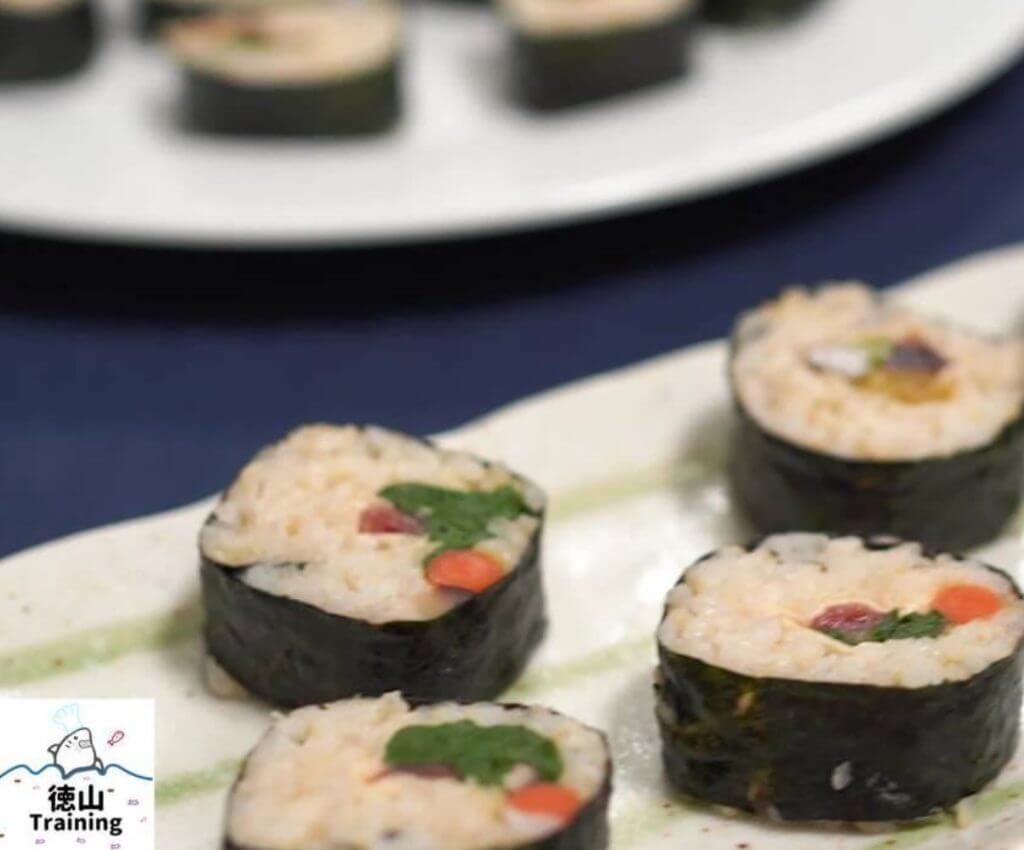
Maki sushi has become a popular dish all around the world, and it has been adapted to suit local tastes and ingredients. Here are some of the most popular variations of maki sushi that you can find in different parts of the world:
- California Roll: This is a type of maki sushi that was invented in the United States. It typically contains avocado, cucumber, and crab meat, and is often served with a dipping sauce made from soy sauce and wasabi.
- Philadelphia Roll: Another popular maki sushi roll from the United States, the Philadelphia roll is made with smoked salmon, cream cheese, and cucumber. It is often served with a sweet and savory sauce made from soy sauce and mirin.
- Dragon Roll: This is a type of maki sushi that is popular in Japan and other parts of the world. It typically contains shrimp tempura, avocado, and cucumber, and is often topped with eel and avocado slices.
- Spicy Tuna Roll: This is a popular maki sushi roll that is made with raw tuna and spicy mayo. It is often served with a dipping sauce made from soy sauce and wasabi.
- Rainbow Roll: This is a colorful maki sushi roll that is made with a variety of different fish, such as tuna, salmon, and yellowtail. It is often served with a sweet and savory sauce made from soy sauce and mirin.
- Alaska Roll: This is a type of maki sushi that is made with smoked salmon, avocado, and cucumber. It is often served with a dipping sauce made from soy sauce and wasabi.
- Boston Roll: This is a type of maki sushi that is made with cooked shrimp, cucumber, and lettuce. It is often served with a sweet and savory sauce made from soy sauce and mirin.
- Spider Roll: This is a type of maki sushi that is made with soft-shell crab, avocado, and cucumber. It is often served with a dipping sauce made from soy sauce and wasabi.
- Temaki Sushi: This is a type of maki sushi that is made by wrapping the ingredients in a cone-shaped piece of nori. It can be filled with a variety of different ingredients, such as shiitake mushrooms, poke, canned tuna, and avocado.
Overall, maki sushi is a versatile dish that can be customized to suit a variety of different tastes and ingredients. Whether you prefer traditional nigiri sushi or more modern maki rolls, there is sure to be a type of sushi that you will enjoy.


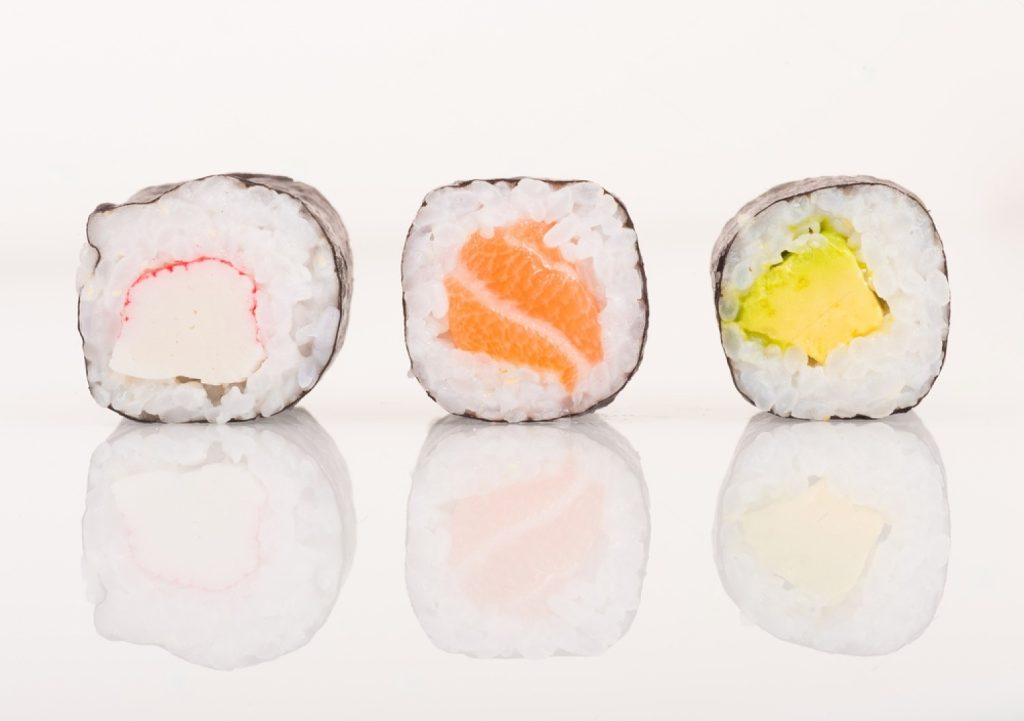

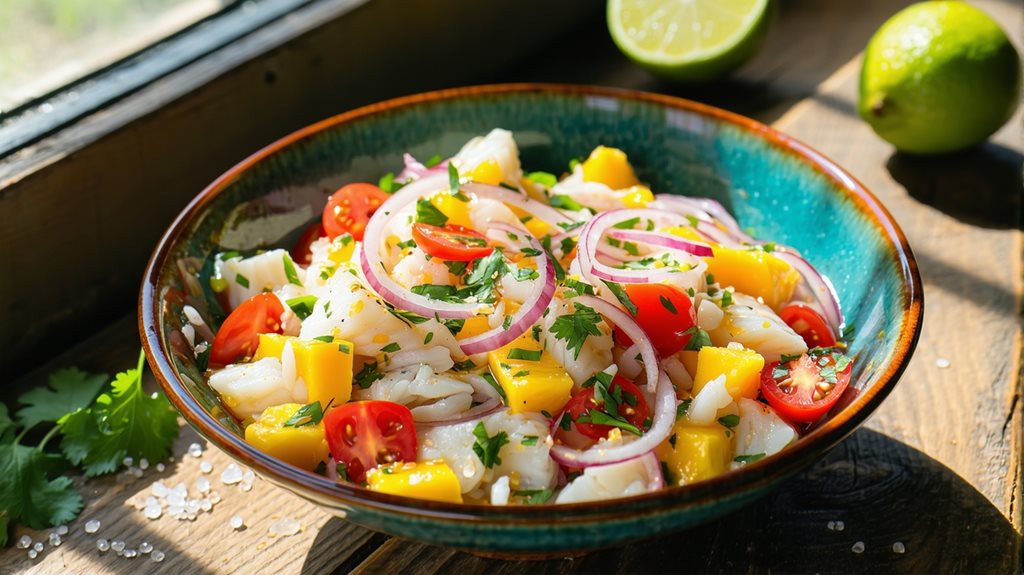
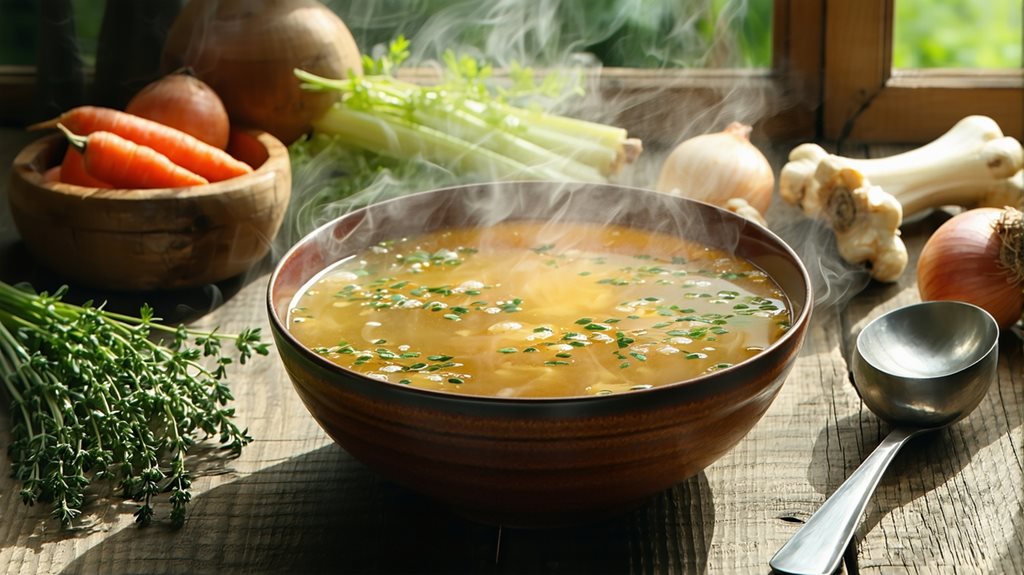
Konnichiwa! (Hello!) I'm Pat Tokuyama, a Japanese tofu cookbook author, who travels for music, food, and adventure. If you like Japanese tea, checkout some of the newestorganic japanese tea, matcha bowls and noren and more!
** Curious about the Plant Based Japanese Cooking Club? ** Learn more here!